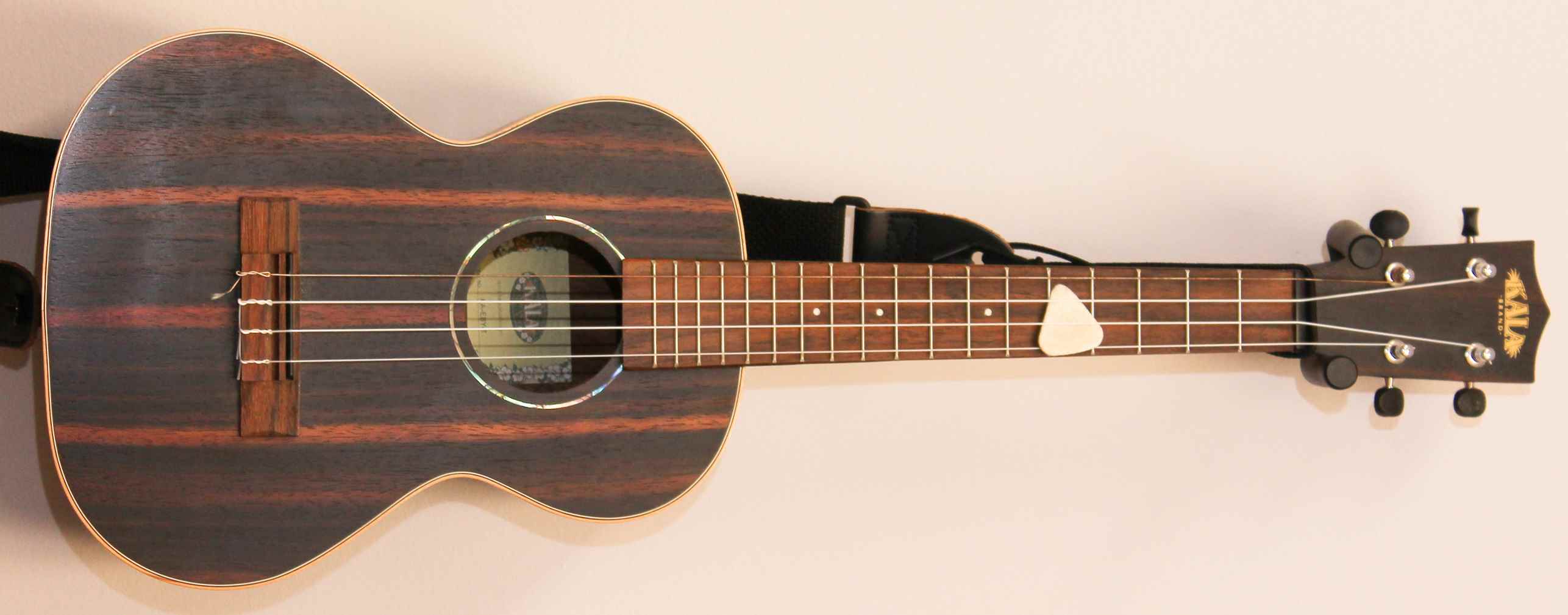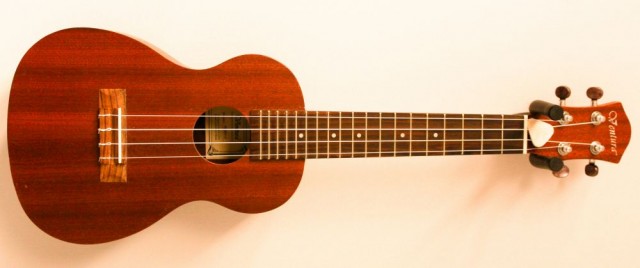Everything on this list for beginning players is essential to be able to play the ukulele! These aren’t just tips, but they make it possible to play, and to play well.
- Playing a fretted fingerboard instrument takes muscular effort and focus!
- Curve your left hand into a circle so that your thumb can clamp against the back of the neck to help the other fingers press down on the strings.
- Your thumb must be at or near the center of the back of the neck so it can help the other fingers.
- Press your right forearm against the front of the uke, pushing it against your body to create a lever that helps your left hand press down on the strings.
- Swivel your left hand to find the best position to play the chord you need; this is especially important for the chord G: swivel your hand toward the head of the uke to get a natural triangular shape for your fingers.
- When pressing down a string, put your finger just behind the fret on the fingerboard (closer to the head), so it has good leverage to hold the string down onto the fret.
- Always keep the front (soundboard) of the uke completely vertical (perpendicular to the floor). If you need to look at the frets and strings, lean your head forward to do that. (If it’s not vertical, you can’t reach the notes well enough with your left hand.)
- There are three different numbering systems operating at once:
1) Fingers: 1st (index), 2nd (middle), 3rd (ring), 4th (pinky)
2) Strings: 1st (A), 2nd (E), 3rd (C), 4th (G)
3) Frets: open, 1st, 2nd, 3rd, 4th, 5th, etc. on up the neck
So, e.g., the note D is 2nd finger on the 3rd string at the 2nd fret.
- When strumming, there are three main choices of method:
1) thumb
2) backs of fingernails
3) felt pick
- Strum by shaking your wrist loosely as if you’re trying to fling water off your hand.
- Strumming rhythms are made special by not hitting all the strings on the way down or up, but by catching some strings more strongly than others. You never stop strumming (no pauses of your hand), but some of the time you miss the strings, in a great variety of ways.
- When changing from one chord to another (or one single note to another), look for ways of fingering each chord so that there is a minimum of change needed between them --- e.g., from a G chord to a D7 chord, slide your 3rd finger down one fret and swing your 2nd finger across to the fourth string, in one dancing motion.
--- If you incorporate these concepts and techniques when you practice uke, things should go really well, and it will truly be what I call the 'smile instrument'! Happy playing!






Comments